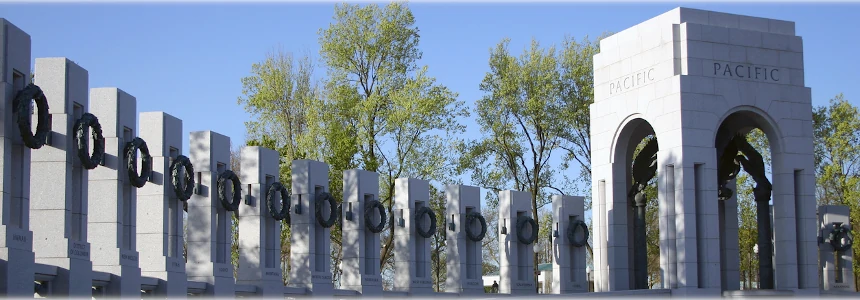The theoretical foundations of the study of public memory date back to the early twentieth century work of French philosopher and anthropologist Maurice Halbwachs, who is credited with innovating the concept of collective memory. While the re-popularization of the concept in the 1980s was interdisciplinary, and today’s public memory scholars work in sociology, anthropology, cultural studies, literary criticism, and elsewhere, rhetoric has been a leading contributor to the revival of public memory scholarship. In turn, the rhetoric of public memory has become an important specialization of rhetorical research.
Public memory, when it reappears in rhetorical scholarship, is employed to study cultural practices of remembering and forgetting and their social, cultural, and political consequences for the communities that engage in them. Rhetoricians are interested in the way that groups, collectives, and cultures employ discursive and material practices to produce shared understandings of the past, and the way these shared understandings shape people’s relationship to the present and the future. This guide provides an introduction to the study of public memory with a specific focus on the rhetoric of public memory for prospective graduate students interested in these areas. After briefly discussing the history of the study of public memory and how the term is distinguished from other forms of memory, the following sections explore rhetorical approaches to the study of public memory, including the study of monuments, museums, and visual culture.
The History and Meaning of Public Memory
The study of public memory came into popularity in the 1980s and 1990s in a number of different disciplines under a number of different names, including collective memory, social memory, popular memory, and cultural memory. However, as Blair, Ott, and Dickinson argue in the introduction to their important volume, Places of Public Memory (2010), memory scholars are united in spite of these terminological differences by their investment in understanding how groups of people come to share specific understandings of the past that often differ significantly from those held by other groups. [To learn more, check out our exclusive interviews with Carole Blair, Greg Dickinson, and Brian Ott.]
This focus distinguishes public memory from two importantly different but related scholarly efforts: the psychological study of individual memory and the examination and analysis of collective or communal history. Prior to the development of scholarship on public memory, the majority of literature on the subject consisted of philosophical and scientific explorations of the phenomenon of individual memory. Without denying that memory takes place at least partly in the minds of individual people, scholars who study the rhetoric of public memory are specifically interested in the processes through which this individual psychological phenomenon becomes shared across groups, collectives, and cultures. In attending to these questions, rhetoricians study public memory through the discourses, rituals, and strategies through which these groups go about memorializing the past. As such, they are more interested in external manifestations of memory in culture than they are in the psychology of individuals.
Scholars frequently draw a contrast between the study of memory and the study of history. Whereas the academic study of history has traditionally endeavored to create a more-or-less objective record of the past, public memory scholars are interested in how knowledge and beliefs about history are a social construction, and often one that works to shore up the interests of dominant groups.
In practice, the distinction between the study of history and memory tends to be less stark, especially with the popularization of critical perspectives on history informed by Black studies, Indigenous studies, critical ethnic studies, gender and sexuality studies, and related traditions. These perspectives attend to the biases of “objective” accounts of history, stressing how the preservation and representation of history is intertwined with the interests of power. What distinguishes rhetorical studies of public memory is its focus on analyzing the discourses — taken broadly to include texts, visual images, artifacts, and material sites like museums and monuments — that work to cement or contest these dominant accounts of the past.
Spotlight on Scholarship – Featured Scholars in the Study of the Rhetoric of Public Memory
Discover contemporary scholars conducting research on the rhetoric of public memory, from analyses of the persuasive and potentially political nature of museums and monuments to research on the impact of new media and visual culture on how cultures and collectives remember.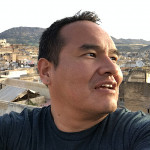
Dr. Eric Aoki is Professor of Communication Studies at Colorado State University, where he teaches graduate courses in Communication & Cultural Diversity. Dr. Aoki is a prolific rhetorical scholar, whose research is concerned with voice, identity, and cultural representation in public discourses. Dr. Aoki is a frequent collaborator, and has co-authored with Brian Ott and Greg Dickinson several important contributions to the study of the rhetoric of public memory. Together, these scholars have produced some of the most important scholarship on museums, including pieces like “Spaces of Remembering and Forgetting: The Reverent Eye/I at the Plains Indian Museum,” and "Ways of (Not) Seeing Guns: Presence and Absence at the Cody Firearms Museum.” Their research explores the ways in which museums operate rhetorically to conceal the violent and exclusionary features of our cultural history, as much as they work to glamorize its romantic aspects.
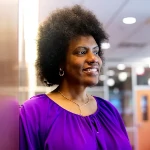
Dr. Patricia Davis is Associate Professor of Communication at Northeastern University, where she conducts critical / cultural research influenced by both rhetoric and media studies. Her acclaimed book, Laying Claim: African American Cultural Memory and Southern Identity is an important text on the relationship between public memory, race, and identity in the United States, and received the Top Book Award from two separate divisions of the National Communication Association: the American Studies Division in 2017, and the Critical/Cultural Studies Division in 2018.

Dr. Thomas R. Dunn is an Associate Professor of Communication Studies at Colorado State University, where he also serves as the Coordinator for the Master Teacher Initiative for the College of Liberal Arts. Dr. Dunn’s research focuses on the practices of public memory employed by members of the LGTBQ+ public. His book Queerly Remembered: Rhetorics for the Representing the GLBTQ Past (2016), which was named Book of the Year by the GLTBQ Communication Studies Division of the National Communication Association, explores how individuals and communities draw on rhetorics of a shared past to effecting sociopolitical change. His current project investigates how queer communities remember the persecution of GLTBQ people during the Holocaust. Dr. Dunn has also published in the field’s most important journals, including Communities and Critical /Cultural Studies, and received the New Investigator Award for his work from the Critical / Cultural Studies Division of NCA in 2017.

Dr. Nicole Maurantonio is a Professor of Rhetoric and Communications at the University of Richmond. Her research is interested in the relationship between public memory and social and political movements in the United States, with a particular emphasis on movements for racial justice. Her research employs qualitative methodologies to explore some of the most pressing issues related to public memory today, such as in her 2019 book Confederate Exceptionalism: Civil War Myth and Memory in the Twenty-First Century and her 2019 publication Tarred by History: Memory, Materiality, and Protest (2018). At Richmond, Dr. Maurantonio is also a recognized, and engaged scholar. In 2019, she won both the Distinguished Educator Award and the Engage for Change! Award for her contributions to the Institute for Race and Racism at the University of Richmond.

Dr. Kendall Phillips is Professor of Communication and Rhetorical Studies at Syracuse University, where he is also founding co-director for the Lender Center for Social Justice. Dr. Phillips is a highly influential scholar of the rhetoric of public memory, whose research focuses on the relationship between public memory and media cultures. His writings investigate the rhetoric of visual media and popular culture, most specifically the role that U.S. cinema plays in shaping public memory in the West. Two decades into his career, Dr. Phillips remains a prolific and vital voice in the field of public memory. His publications include A Place of Darkness: The Rhetoric of Horror in Early American Cinema (2018) and “‘The Safest Hands are our Own’: Cinematic Affect, State Cruelty, and the Election of Donald J. Trump,” which was published in Communication and Critical / Cultural Studies in 2018. Dr. Phillips has also received numerous distinctions as an educator, and currently holds an appointment as Visiting Professor at York St. John University in the UK.

Dr. Marita Sturken’s is Professor of Media, Culture, and Communication at New York University. Her work focuses on the relationship between visual culture and public memory, investigating the ways that visual media have been deployed to construct cultural understandings in the past in response to crises in national identity. She is the author of a number of books, including the influential texts Tangled Memories: The Vietnam War, The AIDS Epidemic, and the Politics of Remembering (1997), Practices of Looking: An Introduction to Visual Culture (2001), and Tourists of History: Memory, Consumerism, and Kitsch in American Culture (2007). Dr. Sturken is still an active educator, and teaches classes in visual culture, popular culture, cultural studies, and advertising. In 2022, she published to book Terrorism in American Memory: Memorials, Museums, and Architecture in the Post-9/11 Era.

Dr. Barbie Zelizer is the Raymond Williams Professor of Communication in the Annenberg School for Communication at the University of Pennsylvania, where she also serves as Associate Dean of Research and Director of the Center for Media at Risk. A former journalist, Dr. Zelizer’s work focuses on the relationship between media institutions, visual culture, and public memory. Dr. Zelizer’s research has been recognized with a Guggenheim Fellowship among numerous other accolades, including an appointment as a Fulbright Senior Scholar and election to the American Academy of Arts and Sciences. She is a prolific writer and editor, whose notable works include About to Die: How New Images Move the Media (2010) and Reporting War: Journalism in Wartime (with Stuart Allen, 2004). In 2021, she published The Journalism Manifesto with Pablo Boczkowski and C. W. Anderson.
The Rhetoric of Public Memory: Remembering in Public
Public memory, as defined in the previous section, describes the phenomenon where groups of people come to share a specific understanding of the past. What does it mean, in light of this, to talk about the rhetoric of public memory? Rhetorical scholarship is, generally speaking, invested in studying public persuasion and its social, cultural, and political consequences. In foregrounding the socially constructed nature of memory, this definition also implies that public memory is necessarily partial. In other words, those practices that construct public memory do not simply produce a shared cultural perception of history; the version of the past that they produce is one particular interpretation that necessarily omits others and, because of this, can have profound consequences on the attitudes, beliefs, and actions of the public.
Public memory can be understood as a rhetorical process unto itself insofar as it shapes publicly held sentiments about the world to great cultural and political significance. This partiality is complemented, too, by the ways in which public memory is employed and the strong responses that public memory often elicits from the members of its communities. Scholars argue that practices of public memory typically have as much, if not more, to do with the present moment and its defining anxieties and exigencies than they do with the past. Moreover, practices of remembering have profound consequences for the present and the future. That is, public memory is motivated by and reflects pressing social and political concerns in the present, and its rhetorical deployment helps shape how the public responds to these issues, and consequently, what transpires in the future.
This world shaping potential of the rhetoric of public memory stems from two of its other properties. First, public memory has a distinct affective component, meaning it does not simply shape what we know about the past, but how we feel about history. Public memory is as concerned with collectively held feelings toward the past as much as it is with historical knowledge. From the Vietnam War Memorial to the AIDS Memorial Quilt, monuments to the past tend to elicit strong emotional reactions from their viewers, and are also deployed to aid in the collective processing of communal traumas.
Representations of history also work to cultivate affective states like nostalgia that can do important rhetorical work in white-washing history and priming how the public understands and responds to current events. For example, news media coverage has deployed nostalgic, sanitized portrayals of Civil Rights Era movements and the post-Civil Rights Era to delegitimize the contemporary Black Lives Matter movement, while obscuring the enduring centrality of racism in the United States. [For a more detailed discussion, check out our Communication in Action article on Sarah J. Jackson’s work entitled: “Making #BlackLivesMatter in the Shadow of Selma: Collective Memory and Racial Justice Activism in U.S. News ,” which draws on an exclusive interview with the author.]
Second, public memory also serves a distinct social function in uniting groups of people around shared beliefs. In some cases, this can be positive. Many marginalized groups, for example, have used rhetorical practices to retain understandings of the past in the face of oppression and colonization. At the same time, contemporary scholars also stress the ways in which Holocaust deniers and other extremist groups often organize themselves around revisionist rewritings of history.
Scholars who study the rhetoric of public memory engage with the various ways that different groups of people represent the past, and seek, foremost, to understand their cultural and political consequences. Viewing public memory as rhetorical also means viewing it as a zone of struggle, where different public actors with different political motives compete to shore up particular understandings of the past. Those interpretations and sentiments that prevail in public memory put in place a foundation for assessing problems in the present and for public decision-making in the future. The rhetoric of public memory aims to study this process of struggle and social transformation by attending to the practices different groups of people use to commemorate and assign meaning to historical events.
Remembering through the Material: Monuments, Memorials, Museums
The relationship between memory and materiality has become an important concern of contemporary scholarship on the rhetoric of public memory. In seeking to understand how memory is constructed across collectivities, critics look to analyze the variety of different media that work to represent the past. For some critics, this has meant looking to the ways in which traditional forms of rhetoric, like spoken and textual discourse, are significant to public memory. Others have been driven to explore the many different forms of media involved in memorialization and, in doing so, have contributed to expanding rhetoric’s traditional focus on persuasive speeches and texts. This section discusses the study of monuments, museums, and memorials as one example of the material emphasis of public memory scholarship.
In times of great national struggle, cultures tend to make recourse to some of the most permanent structures of all: monuments and memorials. Built to stand the test of time and ensure that central events, objects, people, or places do not fade from the collective consciousness, these are sites where cultures often choose to selectively enshrine their pasts. They are, as a result, tremendously political in nature. This much is perhaps obvious from recent controversies surrounding the removal of monuments to the Confederacy. These controversies testify to the deeply political nature of public memory, especially when one considers that the vast majority of the structures were built years after the conclusion of the Civil War.
Literature on public memory and place is an important example of how different media have distinct rhetorical properties that affect the persuasive character of their accounts of history. Museums have emerged as another important site of rhetorical inquiry on these grounds. Museums enable unique forms of connection through their design. Preserved objects give one a sense of reality and presence that is not accessible in the second-hand accounts of texts.
As with photography, this substantiality also lends museums a degree of persuasive authority. These are often important factors in the role museums play staging encounters between visitors and the past. At the same time, they can make the biases and omissions of museums hard to ascertain. For example, as Victoria Gallagher (1999) argues, the Birmingham Civil Rights Institute succeeds in connecting with its audiences in many ways, but ultimately, through its narrative presentation, conveys a tale of progress that may problematically position the struggle of African Americans as a thing of the past.
Monuments and memorials have been a centrally important site for the solidification and contestation of public memory. However, they are but one medium that works, in this way, to shore up and unsettle public memory. Public memory scholars’ interest in the materiality of memory extends to their explorations of the wide variety of media that shapes public memory, especially in investigations of visual rhetorics and the relationship between public memory and digital technologies.
Remembering through the Media
Rhetorical scholars Barbie Zelizer, Robert Hariman, and John Louis Lucaites have made some of the most influential contributions to the study of visual rhetoric and its relationship to collective memory. These rhetorical scholars study the ways moving images capture the past while at the same time maintaining relationship with the present. It is this ability to preserve experience through space and time that gives photographs their special authority as a medium. For Zelizer, this also allows photographs to impart representations of the past with a sense of contingency and open-endedness. For example, she argues that “about to die photographs” like those that captured the 9/11 terrorist attack unfolding freeze a moment of collective trauma in time, often eliciting a profound emotional reaction from the public.
This echoes arguments made by John Louis Lucaites throughout his work, with David Hariman and others, on iconic photography and emotion. Certain photographs are suffused with collective meaning and emotion, they argue, and come to structure collective perceptions of events, eliciting strong responses from audiences in the present moment and across space and time. Examples of this include the infamous photograph of a woman crying out in anguish over the body of a fellow student during the Kent State Massacre and the photograph of Emmett Till that was widely circulated in the wake of his death and continues to be circulated today to convey the horrors of anti-Black racism in the United States. Each of these photographs played a role in social movements during their day but have taken on an iconic quality, too, standing in for crucial events in public memory.
An understanding of visual rhetoric has remained important as scholars have turned to examine digital media’s role in shaping our collective perceptions of the past. Contemporary scholars have taken up the task of understanding how digital media and social media platforms have changed how public memory is formed. Digital technologies offer new ways of remembering, like easily capturing and digitally storing photographs and videos, while also affording new ways for people to connect in order to contest or defend dominant narratives of history outside of traditional media channels. This has been valuable for social movements to circulate “counter-memories” to the narratives of history told by power, though digital media has played an equally important role in allowing revisionist histories that serve particular political interests to proliferate, from Holocaust denial, to disinformation about slavery and claims the Confederacy never conceded, to refutations of the events of the 2020 U.S. Presidential Election and the January 6th, 2021 insurrection.
The Rhetoric of Public Memory Today
In the present political and cultural context, the rhetoric of public memory is as crucial as it has ever been. Today, public struggles are waged over both the long and immediate past, and digital media allows for people to manipulate the historical record in real-time. Rhetorical scholarship on public memory offers tools to confront these problems and contemporary scholars have tackled subjects like Holocaust denial and the erasure of historical incidents of anti-Black violence like the Tulsa Massacre from the collective consciousness.
Further, as discussed throughout this article, public memory scholarship has always had an interest in the way memory is materialized in culture. Because of this, scholars have quickly responded to the need to theorize the relationship between new forms of media and public memory. This is an important task as, more and more, digital technologies assume the task of remembering for us. For these two reasons, rhetoricians of public memory are at the forefront of some of today’s most pressing theoretical and political debates.
Sources and Additional Resources
Those interested in learning more about the rhetoric of public memory should check out the links to our exclusive interviews with Carole Blair, Greg Dickinson, and Brian Ott included above. They should also explore the following sources:
- Banks, Chloe. 2018. “Disciplining Black Activism: Post-Racial Rhetoric, Public Memory and Decorum in News Media Framing of the Black Lives Matter Movement.” Continuum, 32(6):709–720. https://www.tandfonline.com/doi/full/10.1080/10304312.2018.1525920.
- Blair, Carole. 1999. “Contemporary U.S. Memorial Sites as Exemplars of Rhetoric’s Materiality.” In Rhetorical Bodies. Jack Selzer and Sharon Crowley, eds. Madison: University of Wisconsin Press:16-57.
- Blair, Carole. 2001. “Reflections on Criticism and Bodies: Parables From Public Places.” Western Journal of Communication, 65:271-294.
- Blair, Carole. 2012. “Visiting the Past Rhetorically: Places of Public Memory,” in Communication Studies: Translating Communication Scholarship into Meaningful Practice, eds. Alan K. Goodboy and Kara Schulz, eds. Kendall/Hunt: 379-391.
- Blair, Carole, and Neil Michel. 2000. “Reproducing Civil Rights Tactics: The Rhetorical Performances of the Civil Rights Memorial.” Rhetoric Society Quarterly, 30:31-55.
- Cole, Courtney E. 2018. “Commemorating Mass Violence: Truth Commission Hearings as a Genre of Public Memory.” Southern Communication Journal , 83 (3): 149–66. https://www.tandfonline.com/doi/full/10.1080/1041794X.2018.1432067.
- Dickinson, Greg, Carole Blair, and Brian L. Ott, eds. 2010. Places of Public Memory: The Rhetoric of Museums and Memorials. University of Alabama Press.
- Dickinson, Greg, Brian L. Ott, and Eric Aoki. 2006. “Spaces of Remembering and Forgetting: The Reverent Eye/I at the Plains Indian Museum.” Communication and Critical/Cultural Studies , 3(1):27- 47.
- Dunn, Thomas R. 2014.“‘The Quare in the Square’: Queer Memory, Sensibilities, and Oscar Wilde.” Quarterly Journal of Speech, 100(2):213-240.
- Endres, Danielle, and Samantha Senda-Cook. 2011.“Location Matters: The Rhetoric of Place in Protest.” Quarterly Journal of Speech 97(3):257-282.
- Gallagher, Victoria J, 1999. “Memory and Reconciliation in the Birmingham Civil Rights Institute.” Rhetoric & Public Affairs, 2(2):303-320
- Greene, Ronald Walter. 2010. “Spatial Materialism: Labor, Location, and Transnational Literacy.” Critical Studies in Media Communication, 27(1):105-110.
- Hansen, Miriam Bratu. 1996. “‘Schindler’s List’ Is Not ‘Shoah’: The Second Commandment, Popular Modernism, and Public Memory.” Critical Inquiry 22(2):292–312.
- Hariman, Robert and John Louis Lucaites. 2003. “Public Identity and Collective Memory in US Iconic Photography: The Image of‘Accidental Napalm’.” Critical Studies in Media Communication, 20 (1):35-66.
- Haskins, Ekaterina. 2007. “Between Archive and Participation: Public Memory in a Digital Age.” Rhetoric Society Quarterly,37(4):401-422.
- Houdek, Matthew, and Kendall R. Phillips. 2017. “Public Memory.” In Oxford Research Encyclopedia of Communication, Matthew Houdek and Kendall R. Phillips eds. Oxford University Press. https://oxfordre.com/communication/display/10.1093/acrefore/9780190228613.001.0001/acrefore-9780190228613-e-181.
- Jackson, Sarah J. 2021. “Making# BlackLivesMatter in the shadow of Selma: Collective memory and Racial Justice Activism in US news.” Communication, Culture and Critique, 14 (3):385-404.
- Marback, Richard. 2008. “Unclenching the Fist: Embodying Rhetoric and Giving Objects Their Due.” Rhetoric Society Quarterly, 38:46-65.
- Mandziuk, Roseann M. 2003. “Commemorating Sojourner Truth: Negotiating the Spaces of Public Memory” Western Journal of Communication, 67:271-291.
- Ore, Ersula J. 2019. Lynching: Violence, Rhetoric and American Identity. The University of Mississippi Press.
- Ore, Ersula and Matthew Houdek. 2020. “Lynching in Times of Suffocation: Toward a Spatiotemporal Politics of Breathing.” Women’s Studies in Communication 43 (4): 443–58. https://www.tandfonline.com/doi/full/10.1080/07491409.2020.1828709.
- Phillips, Kendall R., Stephen Howard Browne, Barbara Biesecker, Barbie Zelizer, and Charles E. Morris. 2004. Framing Public Memory. University of Alabama Press.
- Sturken, Marita. 1997. Tangled Memories: The Vietnam War, the AIDS Epidemic, and the Politics of Remembering. University of California Press.
- Sturken, Marita. 1991. “The Wall, the Screen, and the Image: The Vietnam Veterans Memorial.” Representations 35:118-142.
- Wright, Elizabeth A. 2005. “Rhetorical Spaces in Memorial Places: The Cemetery as a Rhetorical Memory Place/Space.” Rhetoric Society Quarterly 35:51-81.
- Zagacki, Kenneth S., and Victoria J. Gallagher. 2009. “Rhetoric and Materiality in the Museum Park at the North Carolina Museum of Art.” Quarterly Journal of Speech 95(2):171-191.
- Zelizer, Barbie. 2010. About to Die: How News Images Move the Public. Oxford University Press.
Additional Topics on Research in Rhetorical Studies
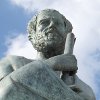
This guide provides an in-depth discussion of rhetorical studies, describing the history and significance of the discipline while also providing readers with theories that are useful to understanding different forms of rhetoric and their functions in human communication.

This article discusses the field of critical rhetoric and its importance in the examination and exposure of power dynamics in society. It also provides information on key scholars in the field who study how rhetoric connects to equality, politics, and cultural values.

This detailed article discusses the history and forms of gender criticism in rhetorical studies, and also explains the political, social, and cultural significance of this field of study.

This article provides an overview of genre criticism in rhetorical studies, and how it has evolved over the centuries. It also explains the influential work of scholars in this field of study.

This article explores scholarly approaches to understanding persuasion as material. Explore how scholars have attempted to understand rhetorical discourse as a material thing, and, on the other hand, how material things, like monuments and roads, can be politically persuasive.

This article explains how metaphors are widely used in human communication and understanding, and provides a background on the history and prominent scholarship of this field.

This article covers narrative criticism and the role it plays in culture, politics, and relationships, while also providing examples of prominent scholarship in this field.
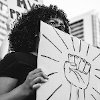
This article examines the history and impact of social movement rhetorical research, and provides readers with a detailed overview of some of the latest research in the field that is being completed by eminent scholars of social justice and civil rights rhetoric.
